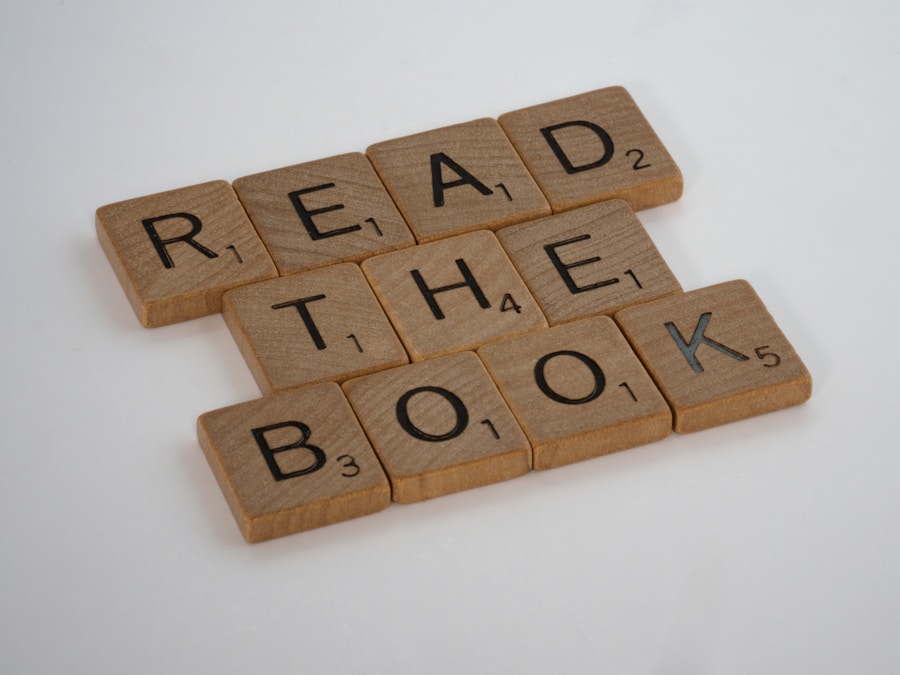
Reading comprehension is a multifaceted skill that involves the ability to understand, interpret, and analyze written text. At its core, reading comprehension is not merely about decoding words; it encompasses a deeper engagement with the material. This engagement requires readers to connect ideas, draw conclusions, and reflect on the content.
The process begins with the recognition of words and phrases, but it quickly evolves into a more complex interaction where the reader must consider the author’s intent, the context of the writing, and the underlying themes presented. To fully grasp reading comprehension, one must also recognize its components. These include literal comprehension, which involves understanding the explicit meaning of the text; inferential comprehension, which requires readers to read between the lines and make educated guesses based on the information provided; and evaluative comprehension, where readers assess the quality and credibility of the text.
Each of these components plays a crucial role in how effectively a reader can engage with a piece of writing, whether it be a novel, an academic article, or a news report. Understanding these layers is essential for anyone looking to enhance their reading skills.
Key Takeaways
- Reading comprehension is the ability to understand and interpret what is being read.
- Active reading strategies, such as asking questions and making predictions, can improve comprehension.
- Building vocabulary is essential for enhancing comprehension and understanding the nuances of a text.
- Context clues and inferences can help readers make sense of unfamiliar words and concepts.
- Summarizing and synthesizing information can aid in better understanding and retention of the material.
Active Reading Strategies to Improve Comprehension
Active reading is an approach that transforms passive reading into an interactive experience. This method encourages readers to engage with the text through various strategies that promote deeper understanding. One effective strategy is annotating the text, which involves making notes in the margins, highlighting key phrases, or underlining important concepts.
This practice not only helps in retaining information but also allows readers to track their thoughts and reactions as they progress through the material. By actively engaging with the text in this manner, readers can create a dialogue with the author, leading to a more profound comprehension of the material. Another active reading strategy is asking questions while reading.
This technique involves posing queries about the content, such as “What is the main argument?” or “How does this example support the thesis?” By formulating questions, readers are compelled to think critically about what they are reading. This process encourages them to seek answers within the text, fostering a more engaged and thoughtful reading experience. Additionally, discussing these questions with peers or in study groups can further enhance understanding as different perspectives can illuminate various interpretations of the text.
Building Vocabulary to Enhance Comprehension

A robust vocabulary is fundamental to effective reading comprehension. The more words a reader knows, the better equipped they are to understand complex texts. Vocabulary development can occur through various means, including direct instruction, reading widely across genres, and engaging with challenging materials.
For instance, when readers encounter unfamiliar words in context, they can often deduce meanings based on surrounding words or phrases. This contextual learning not only enriches vocabulary but also enhances overall comprehension by allowing readers to grasp nuanced meanings. Moreover, utilizing tools such as flashcards or vocabulary apps can aid in systematic vocabulary building.
These resources often include definitions, example sentences, and even visual aids that help solidify understanding. Engaging with new vocabulary in multiple contexts—such as writing sentences or using words in conversation—can further reinforce learning. As readers expand their vocabulary, they find themselves better able to navigate complex texts and appreciate subtleties in language that contribute to deeper comprehension.
Using Context Clues and Inferences to Aid Comprehension
| Metrics | Value |
|---|---|
| Students using context clues | 85% |
| Improvement in comprehension | 20% |
| Accuracy of inferences | 75% |
| Retention of information | 90% |
Context clues are hints embedded within a text that help readers infer meanings of unfamiliar words or concepts. These clues can take various forms, such as synonyms, antonyms, or descriptive phrases that provide insight into a word’s meaning. For example, if a reader encounters the word “arduous” in a sentence describing a difficult journey, they might infer its meaning through surrounding phrases that indicate struggle or effort.
By honing the ability to identify and utilize context clues, readers can significantly enhance their comprehension skills. Inferences play a critical role in reading comprehension as well. They require readers to go beyond the text’s literal meaning and draw conclusions based on implied information.
For instance, if a character in a story is described as shivering and wearing a thin jacket in winter, readers can infer that they are likely cold and unprepared for the weather. This skill of making inferences allows readers to engage more deeply with narratives and arguments, as they begin to understand not just what is said but also what is suggested or left unsaid.
Summarizing and Synthesizing Information for Better Comprehension
Summarizing is an essential skill that involves distilling information down to its core elements. When readers summarize a text, they practice identifying main ideas and supporting details while discarding extraneous information. This process not only reinforces understanding but also aids retention by forcing readers to process information actively.
For example, after reading a chapter in a textbook, summarizing key points can help solidify knowledge and prepare for future discussions or assessments. Synthesis takes summarization a step further by requiring readers to combine information from multiple sources or sections of text into a cohesive understanding. This skill is particularly valuable in academic settings where students must integrate various viewpoints or data points into their analyses.
For instance, when writing a research paper, synthesizing information from different studies allows for a more comprehensive argument that reflects a broader understanding of the topic at hand. Both summarizing and synthesizing are vital for developing critical thinking skills and enhancing overall comprehension.
Making Connections and Predictions to Deepen Comprehension

Types of Connections
These connections can be personal, textual, or world-based.
Textual connections, or text-to-text, involve comparing themes or characters across different works. World-based connections, or text-to-world, involve linking ideas from the text to broader societal issues or historical events. For example, when reading about social justice movements in literature, a reader might connect those themes to current events they have witnessed in their community.
Predictions and Engagement
Predictions also play a significant role in enhancing comprehension by encouraging readers to anticipate what might happen next based on clues within the text. This forward-thinking approach keeps readers engaged and invested in the narrative or argument being presented. For instance, while reading a mystery novel, predicting the outcome based on character behavior and plot developments can heighten suspense and deepen engagement with the story.
Cultivating a Deeper Understanding
By actively making connections and predictions, readers cultivate a richer understanding of texts and become more adept at navigating complex narratives.
Using Graphic Organizers and Note-taking to Improve Comprehension
Graphic organizers are visual tools that help structure information in a way that enhances understanding and retention. These tools can take many forms—such as mind maps, Venn diagrams, or flowcharts—and serve as frameworks for organizing thoughts and ideas related to a text. For instance, using a Venn diagram to compare two characters from a novel allows readers to visualize similarities and differences clearly, facilitating deeper analysis of character development and thematic elements.
Note-taking is another powerful strategy that complements graphic organizers by allowing readers to capture key points while engaging with the text. Effective note-taking involves summarizing information succinctly while also incorporating personal reflections or questions that arise during reading.
By combining graphic organizers with thoughtful note-taking practices, readers can create comprehensive study aids that bolster their comprehension and retention of material.
Practicing Critical Thinking Skills for Better Reading Comprehension
Critical thinking is an essential component of effective reading comprehension that involves analyzing information objectively and evaluating its validity. This skill requires readers to question assumptions, assess arguments’ strengths and weaknesses, and consider alternative perspectives. For example, when reading an opinion piece in a newspaper, critical thinkers will not only evaluate the author’s argument but also consider potential biases or counterarguments that may exist.
Engaging in discussions about texts can further enhance critical thinking skills by exposing readers to diverse viewpoints and interpretations. Participating in book clubs or study groups encourages dialogue that challenges individual perspectives and fosters deeper understanding of complex themes or ideas presented in literature or academic texts. By consistently practicing critical thinking skills while reading, individuals can develop a more nuanced approach to comprehension that goes beyond surface-level understanding and encourages thoughtful engagement with diverse materials.
If you are looking to improve your reading comprehension skills, you may want to check out this article on the Dolch Sight Words. These commonly used words are essential for early readers to recognize quickly in order to improve their overall reading ability. By mastering these words, students can enhance their comprehension and fluency when reading.
FAQs
What is reading comprehension?
Reading comprehension is the ability to understand and interpret written text. It involves understanding the meaning of the words, sentences, and paragraphs, as well as making inferences and connections between different parts of the text.
Why is reading comprehension important?
Reading comprehension is important because it is a fundamental skill for academic success and everyday life. It allows individuals to gather information, learn new concepts, and communicate effectively through written text.
What are some strategies to improve reading comprehension?
Some strategies to improve reading comprehension include active reading, such as asking questions while reading, summarizing the main points, and making connections to personal experiences or other texts. Other strategies include building vocabulary, practicing critical thinking skills, and using graphic organizers to organize information.
What are some common barriers to reading comprehension?
Common barriers to reading comprehension include lack of vocabulary, difficulty with decoding words, lack of background knowledge on the topic, and distractions or lack of focus while reading. Additionally, language barriers and learning disabilities can also impact reading comprehension.
How can reading comprehension be assessed?
Reading comprehension can be assessed through various methods, such as standardized tests, informal reading inventories, and teacher-created assessments. These assessments may include multiple-choice questions, short answer responses, and oral retellings of the text.



